The Alternative Guide to New York Map
Save for Later
Share
The Alternative Guide to New York Map
The Alternative Guide
Welcome to The Alternative Guide to New York featuring the 50 best off-beat and unusual things to do. My tailored interactive map is perfect for when you are out on your travels, including my full city guide, photographs and location details all in one place.
Click to discover New York through an alternative lens as we step off the beaten track and unearth hidden gems and curiosities that are often left undiscovered unless you know a local.
Featuring 50 unexpected and one-of-a-kind locations, I guarantee the guide will make for a memorable yet extraordinary experience to complete your visit.
In my interactive map I reveal my black book of favourite places to visit including detailed accounts of each location, historic tales and of course my top travel tips.
This guide was made to inspire you to wander from the usual tourist path, whilst providing a comprehensive guide to inspire fellow off-beat adventurers who intend to visit New York.
Please feel free to get in touch if you have any questions.
Thanks, Vicky
@thealternativeguide_
Updated ago
9
Share
Hotel recommendation
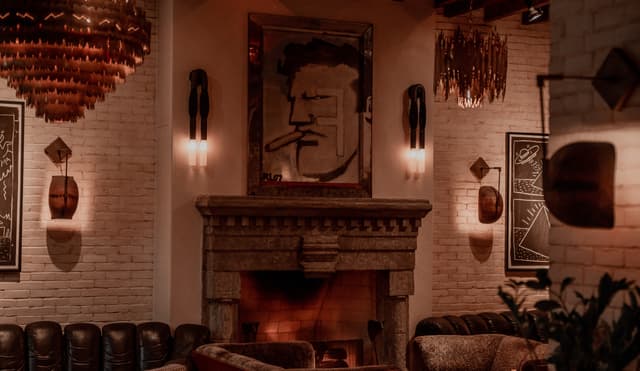
The Ludlow Hotel
@thealternativeguide
A stay at the Ludlow had been on my bucket list ever since I stumbled across it whilst wandering around the Lower East Side years ago. The hotel oozes the neighbourhood’s gritty aesthetic but adds a layer of luxury to create the perfect mix of high end cool and subtle elegance.
Located on Ludlow Street, the hotel is situated in my favourite part of Manhattan, with the surrounding blocks lined with boutique shopping, local eateries and independent coffee shops. Not to mention that, the East Village and Nolita, are both only short walks away.
Upon check-in you are greeted by a cosy living room style lobby with low leather sofas, a roaring limestone fireplace and exposed brick walls, which instantly says - welcome to New York! Rising above the old tenement district the hotel includes 20 floors with a fitness studio and a terrace on the rooftop, providing sweeping views of the skyline.
Each of the bedrooms are beautifully designed with large factory style casement windows, dark hardwood floors, four poster beds, powerful rain showers and Moroccan brass chandeliers. The Queen & King suites also offer deep marble soaking tubs framed by a picture window providing stunning views of the city! No matter if you are travelling solo or with company, they have you covered with their great selection of rooms. For our trip I opted for the Queen loft and was really impressed with the amount of space as well as how gorgeous the bathroom was with its intricate mosaic detail, brass fixtures and movie style lighting.
Although I didn’t have time to eat in the hotel, ‘The Dirty French’ restaurant is located on the ground floor offering relaxed dining across breakfast, lunch and dinner.
This historically rooted hotel encapsulates an authentic feeling of ‘old New York’ creating the perfect residence for your New York city break.
If you are thinking of booking a stay, please support the guide and consider using my affiliate link below.
Add to
Details
Things to do
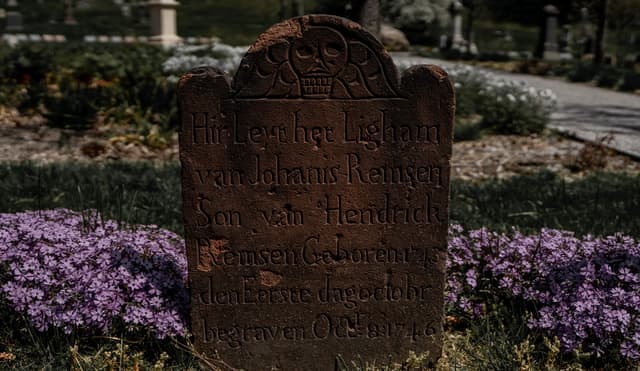
Green-Wood Cemetery
@thealternativeguide
Green-Wood is a fascinating Victorian burial site located in the heart of Brooklyn, which was founded in 1838 as part of the ‘garden cemetery’ movement. The landscapers responsible for designing the cemetery took inspiration from the iconic Père Lachaise in Paris and the Magnificent Seven Cemeteries in London. For which Green-Wood then went on to inspire the creation of Central Park in Manhattan as well as the nearby Prospect Park.
The burial ground was one of the first rural cemeteries in America and is noted for its magnificent beauty spanning 478 acres of rolling hills, valleys, ponds and includes over 7000 trees. Not only did it offer grieving families a peaceful location to visit their loved ones but also a place for New Yorkers to enjoy great natural beauty in a park-like setting. During the 19th century it was noted as Brooklyn’s first public park and back then it was unbelievably one of the most visited tourist destinations for families, even matching Niagara Falls!
Due to the expansive scale of the cemetery, including approximately 600,000 graves, I would recommend starting from the main gates at the Northwest side of the cemetery and working your way down to Fort Hamilton gate at the Southeast point to exit, which are both in fact city landmarks. As you walk up the sweeping drive you will be greeted by the intricately carved Gothic Revival entrance arch designed by Richard Upjohn and if you look closely in the centre, you can see the Monk Parakeet colony which have nested there.
From the main gates head towards the Green-Wood cemetery chapel designed by Warren and Wetmore in the neo-gothic style, which features multiple turrets and 41 figurative stained-glass windows. To the right of the chapel, you will find one of Green-Wood’s original ponds, surrounded by beautiful cherry blossoms it is home to a community of turtles that you can see from the banks.
Walk along Landscape Avenue admiring the grounds of this well-kept site and follow the many smaller pathways which spike your curiosity. Within the centre of the necropolis, you will uncover the Cedar Dell where you can discover some of the oldest graves arranged in a spiritual circle, some of which showcase on the headstones a selection of skull carvings.
Continue south to see ‘Azrael’, the Angel of Death memorial to Brooklyn Mayor Charles Schieren and his wife before exiting through the Fort Hamilton gate.
This route took around three hours to complete but if you have time I would highly recommend exploring more of the cemetery and visiting some of the famous names who are buried here including amongst many others, the corrupt politician William M. Tweed, famous artist Jean-Michel Basquiat and American newspaper editor Horace Greeley.
Green-Wood is still an active cemetery but also a wonderful historic landmark and outdoor museum for those whose curiosity leans towards the macabre.
Tip: Make sure to pick up a map on your way in!
Add to
Details
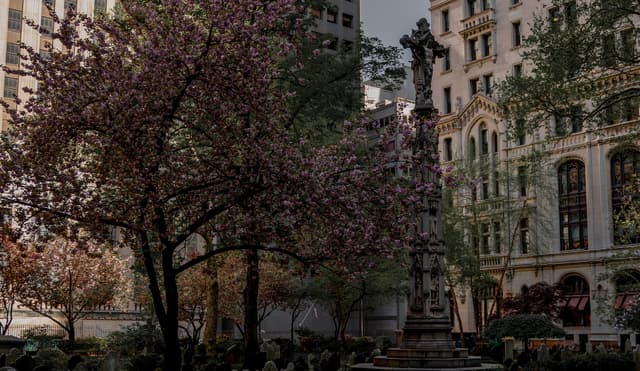
Trinity Churchyard
@thealternativeguide
Trinity churchyard is a small but captivating burial ground including the city’s oldest carved tombstone and many graves dating back to the 17th and 18th centuries.
This quaint site was inaugurated in 1697 and is part of the Episcopal Parish of Trinity Church, which has three separate burial grounds in the city of New York, including St. Paul’s on Broadway and Trinity Cemetery in Washington Heights. The cemetery acts as the final resting place to many past residents, including signatories of the Declaration of Independence and the Constitution like Alexander Hamilton, who the Broadway show is based upon.
Many of the stone carvings have worn away over time, but you can still discover a variety of ‘memento mori’ symbolism etched into the cracked headstones, featuring winged hourglasses, chiselled faces and flying skulls. Personally, I had not seen this style of carving before, so found the different examples particularly interesting.
One distinct grave of note is that of Richard Churcher, (a young boy who sadly died at age five), as his tombstone is said to be the oldest gravestone in New York. The second is that of James Leeson who asked for a Masonic cypher to be inscribed on his tombstone, translating to ‘Remember Death’. One of the larger monuments in the churchyard, located in the Northeast corner, is the Soldiers’ Monument, in honour of Revolutionary War soldiers held in captivity in New York.
Once you have wandered around, turn your attention to the church. Unfortunately, the original building was destroyed in the Great Fire of 1776 but the structure which stands here today, was designed by Richard Upjohn, the renowned architect responsible for the impressive Green-Wood Cemetery entrance gates. The Gothic revival spire and magnificent stained-glass windows make it well worth a trip inside!
Add to
Details
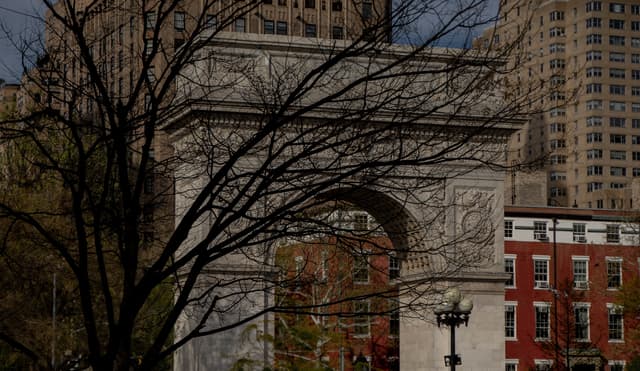
Washington Square Park
@thealternativeguide
Each day the park comes alive and is a hub of cultural activity in Greenwich Village, with a strong presence of street performers, buskers, chess players, poets and musicians.
On the surface it seems to be just like any other regular park but what many don’t know is that in 1706 the square was once known as Potter’s Field and was a public graveyard for the poor. It is believed that up to 20,000 bodies lie beneath the park including those with no religious affiliation, slaves, suicide victims and visitors to the city.
During the Revolutionary War, the site served as a military cemetery for British and American soldiers and then a space to bury victims of the yellow fever epidemic in 1793 before Potter’s Field closed to burials in 1794. The state decided to landscape the grounds into a public park and the square was renamed in 1825 in honour of George Washington and to celebrate the centennial of his inauguration.
The park’s sinister history continues with the inclusion of what is said to be the oldest tree in Manhattan, which is over 330 years old and located in the northwest corner. Nicknamed ‘The Hangman’s Elm’, or ‘Hanging tree’ it is believed that many traitors of the Revolutionary War and inmates from the nearby Newgate State Prison were hung from the branches. There are many urban legends surrounding the tree as no records confirm if any hangings actually took place, but it’s still interesting to wander by and see this old sturdy English elm.
Not only did the square act as a burial ground but it has always been a gathering place for the living. Many free and enslaved Africans used to socialise in the park prior to the American Revolution before the likes of many young bohemians, beatniks and folk artists adopted it as a meeting place in the 50’s and 60’s. Artists like Buddy Holly would spend a lot of time here gaining inspiration by listening to people play and to this day it acts as a meeting place to embrace the freedom of expression.
Grab a coffee from one of the nearby coffee houses (Stumptown, Irving Farm & Third Rail are all close by) and enjoy a stroll through this significant cultural gathering place with an especially dark history.
Add to
Details
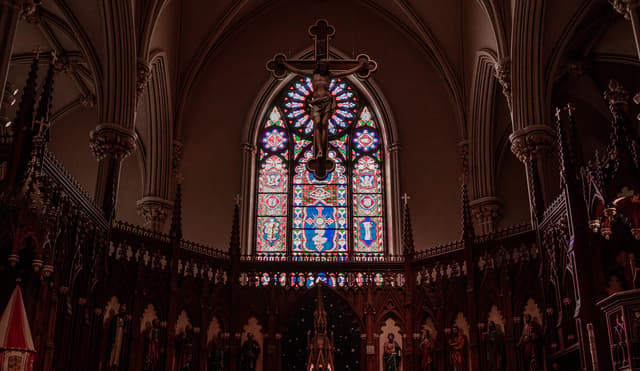
Catacombs by Candlelight
@thealternativeguide
Situated on one of my favourite streets in New York you will find the Basilica of St. Patrick's Old Cathedral. It was built between 1809 and 1815 in the Gothic Revival style and was the seat of the Roman Catholic archdiocese until the newer St. Patrick’s Cathedral was opened on Fifth Avenue. The church was declared a minor basilica by Pope Benedict XVI on St Patrick’s Day in 2010.
Admittance to the cathedral is free of charge, but I would highly recommend booking the Catacombs by Candlelight tour where you can learn about the rich history surrounding the cathedral and gain access to the secret catacombs beneath. Please note these are not open catacombs like you may have seen in Paris, but rather sealed vaults.
The tour lasts just over an hour and starts with a walk through the historic walled graveyard, where you will stop to learn about a selection of influential figures who have been buried here. Interestingly the brick wall surrounding the graveyard was put in place in 1836 to protect the church from nativist rioters.
Next, you will step inside the church to admire its dark neo-gothic interiors, including its beautiful stained-glass windows, before being taken underground to the catacombs, which are only accessible via the tour.
These mysterious catacombs consist of 35 family crypts and 5 clerical vaults with notable interments including the first resident Bishop of New York, John Connolly. The family vault of Thomas Eckert has also been left open so you are able to see inside, including original Thomas Edison light fixtures and a mirror placed on the floor to show the unique ceiling tilework by Rafael Guastavino.
You can also view the old staircase which was used to access the catacombs from street level and as well as sharing a variety of history, the tour guide provided everyone with plenty of time to wander the dark hallways to explore the catacombs at their own pace.
Interestingly the cathedral was also used as a filming location for the baptism scene in The Godfather and in Mean Streets which was directed by Martin Scorsese, who was once an altar boy here!
I would highly recommend booking tickets for the tour in advance, but please note as it takes place in an active church time slots can change due to different ceremonies taking place.
Add to
Details

Buy to unlock full guide
Access all the local insights and recommendations from @thealternativeguide when you purchase this guide.
ABOUT THE AUTHOR
The Alternative Guide
Hi there, I'm Vicky founder of The Alternative Guide.
Every time I travel to a new city I make a list of unusual places, quirky stores, speciality coffee shops, dark museums, independent eateries, one-off street art and any other off the beaten track places I can manage to find.
I put www.thealternativeguide.com together to provide an alternative lens on some of the major cities across the world, encourage support for local independents and share my black book of favourite places to visit.
Hopefully this will inspire you to stray from the usual tourist path and at the same time provide a comprehensive guide for fellow off-beat adventurers when travelling to a new city.
Thanks for reading and feel free to reach out to me with any questions.
IG: @thealternativeguide_
What's included
Digital Map
Fully interactive, digital map for finding places nearby
50 places
50 hand-picked places with notes from the creator
FOCUSES AND THEMES
Architecture
Art
Boutique
Coffee
Design
Foodie
History
People & Culture
Photography
Shopping
Slow Travel
Format
Guide
Guides typically include detailed information and how-to’s about a destination as well as suggested places to try.
COMMON QUESTIONS
What is Thatch?
Thatch is an online marketplace that provides instant access to thousands of vetted local experts and premium travel guides - making it the easiest and most affordable way to take high quality trips with less stress.
For travel creators (tastemakers, travel advisors, influencers and local experts) Thatch makes it easy to curate, publish, and sell digital travel guides, itineraries and personalized planning services.
What if I’m not satisfied with my purchase?
How do I access my purchased guides?
Can I access my guide offline?
How often are guides updated?
Can I request a personalized guide or itinerary?
Can I sell my own travel guides and itineraries?
Save for Later
Share